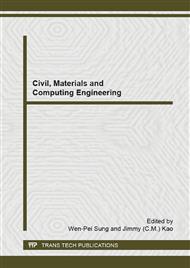p.535
p.539
p.543
p.547
p.553
p.558
p.562
p.566
p.574
The Temperature Distribution of Oil-Immersed Transformer Starting with Heavy Load in Cold Regions
Abstract:
When the large oil-immersed transformer start with heavy load in cold regions, due to the high viscosity of the oil at low temperatures, the flow of the oil is extremely slow in the early start of heavy load, resulting in a negative heat radiation. At the same time, the winding and the core are rapidly increasing heat in the early start of heavy load. Rapid increase in heat and the lack of heat dissipation caused a series of problems. In this paper, we study the process of heating and cooling when the large oil-immersed transformer start with heavy load in cold region and takes a transformer of 31.5MVA as example to build a three-dimensional model ,the model is based on the actual size of the transformer. We use the finite volume method to calculate three-dimensional temperature field distribution changing with time when the oil-immersed transformer startup with heavy load in - 35 °C,-30 °C and-25 °C three cases. The results show that the viscosity coefficient of transformer oil is very high at low temperatures. In the early start of the transformer, because of the poor fluidity of the oil, the heat cannot be dissipated in time and the transformer local overheating near the winding. Then we analyzes the damage of local overheating for a short period of time in the transformer, especially the damage of the oiled paper's insulation At last ,we analysis of the causes of transformer internal local overheating and give some measures to avoid local overheating when oil-immersed transformer start with heavy load in cold regions.KEYWORDS: oil-immersed transformer, cold regions, start with heavy load, FVM, three-dimensional temperature distribution
Info:
Periodical:
Pages:
553-557
Citation:
Online since:
December 2014
Authors:
Price:
Сopyright:
© 2015 Trans Tech Publications Ltd. All Rights Reserved
Share:
Citation:


